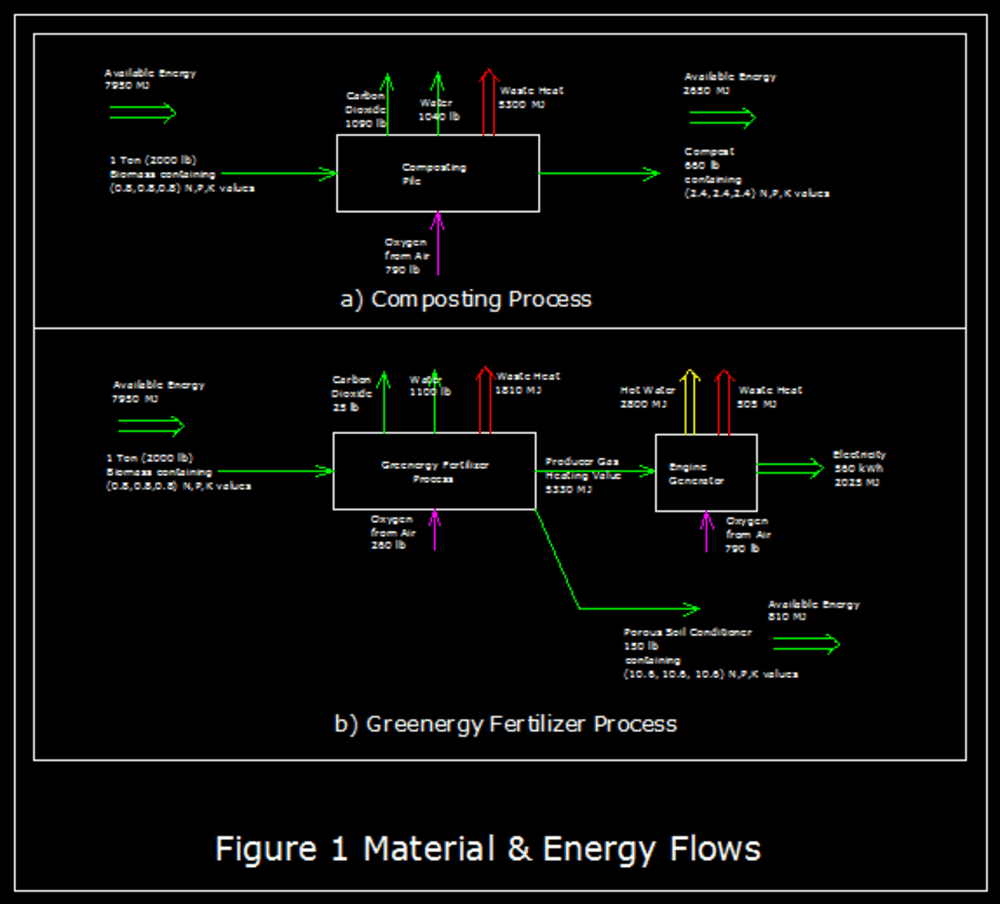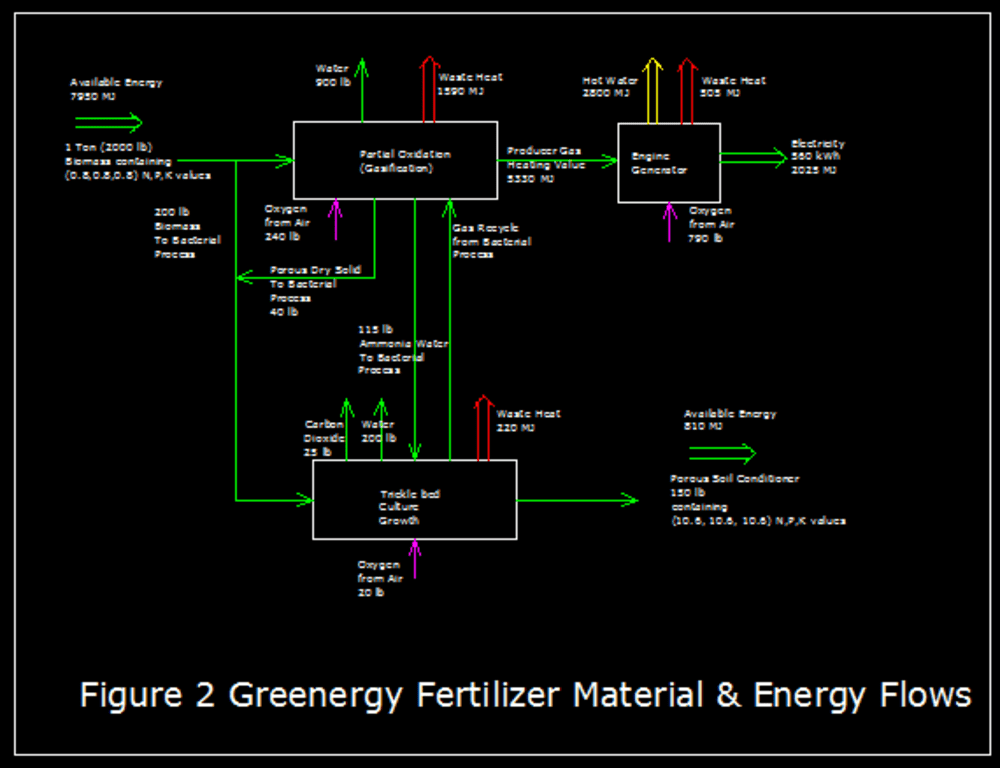Greenergy Fertilizer
In the United States, cities, municipalities, boroughs and counties together collect 65 million tons of yard waste and grass clippings every year (Source- Environmental Protection Agency). There is growing awareness about how this bio-degradable material overloads the landfills. However, the commonly accepted solution of composting this biomass wastes a large quantity of easily recoverable energy.
In composting, bacteria growing on biomass oxidize carbon to carbon dioxide (and evaporate moisture) thereby reducing its weight. This oxidation of biomass converts a large amount of energy to heat. Quantitatively speaking, composting of 65 million tons of biomass produces 22 Million tons of compost, and releases 350 billion MJ of energy as heat. This is equal to 10 days of energy wasted as heat from all US power plants. Figure 1a schematically shows the material and energy flows during composting. Note all N, P, K values present in feed remain in the compost, but due to its reduced weight, the concentration is higher. For illustration it was assumed that the feed contained 16 lb/ton of each N, P, and K.
My design can claim carbon credits on the basis of producing usable energy from previously wasted energy. Material and energy flows for Greenergy Fertilizer process are shown in Figure 1b. Assuming the same feed as that for composting, the fertilizer product has higher N P K values. The essence of the design is to use a controlled partial oxidation (gasification) process in combination with a bacterial process (Figure 2).
Gasification converts carbonaceous material to fuel gas which generates electricity. This concept is not new, the novel part of this design is the method used for gasification and the fact that the thermal process is combined with a bacterial process. Most gasification processes operate at a maximum temperature of 1000-1100oC. At these temperatures the residue becomes sand like with zero K and P fertilizer value. My design ensures full retention of K & P fertilizer value by using moderate temperature. Another benefit of the moderate temperature is that it preferentially removes more labile carbon from the biomass and generates a highly porous residue. The thermal process generates ammonia solution, which is not the most desirable form of fertilizer. However, coupling the thermal process with bacterial process converts the labile ammonia nitrogen to a better form - protein nitrogen in a trickle bed bacterial process.
In the United States, cities, municipalities, boroughs and counties together spend substantial money collecting and disposing yard waste and grass clippings. Many such local bodies have started composting programs to reduce their landfill costs. Greenergy Fertilizer process with simultaneous generation of electricity, fertilizer and heat or hot water, offers opportunity to sell these different products for revenue generation. Such revenue generation will substantially offset the cost of waste collection.
Like this entry?
-
About the Entrant
- Name:Anand Apte
- Type of entry:individual
- Hardware used for this entry:Gasifier PilotSoftware used for this entry:Mathematica
- Patent status:pending





